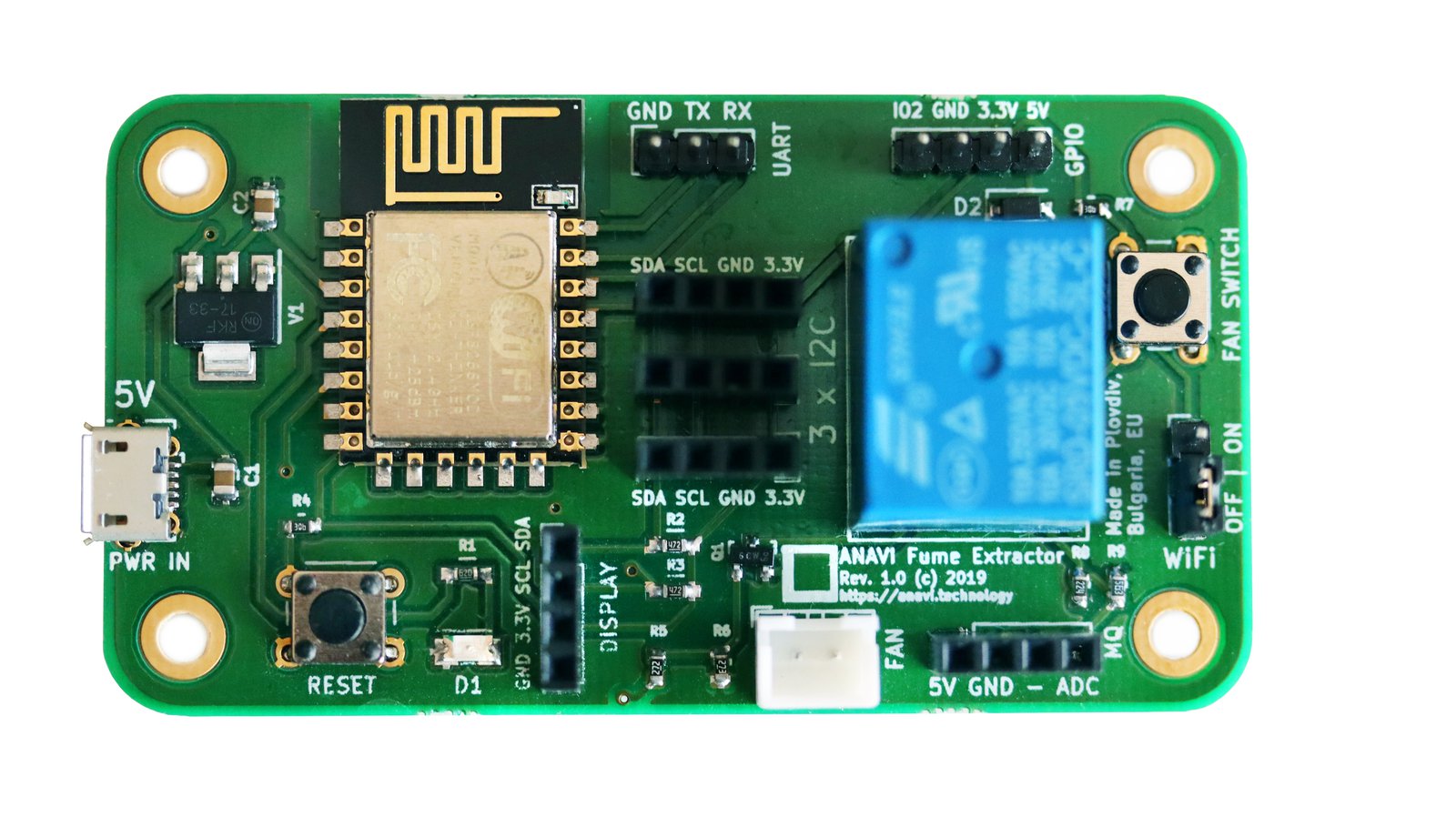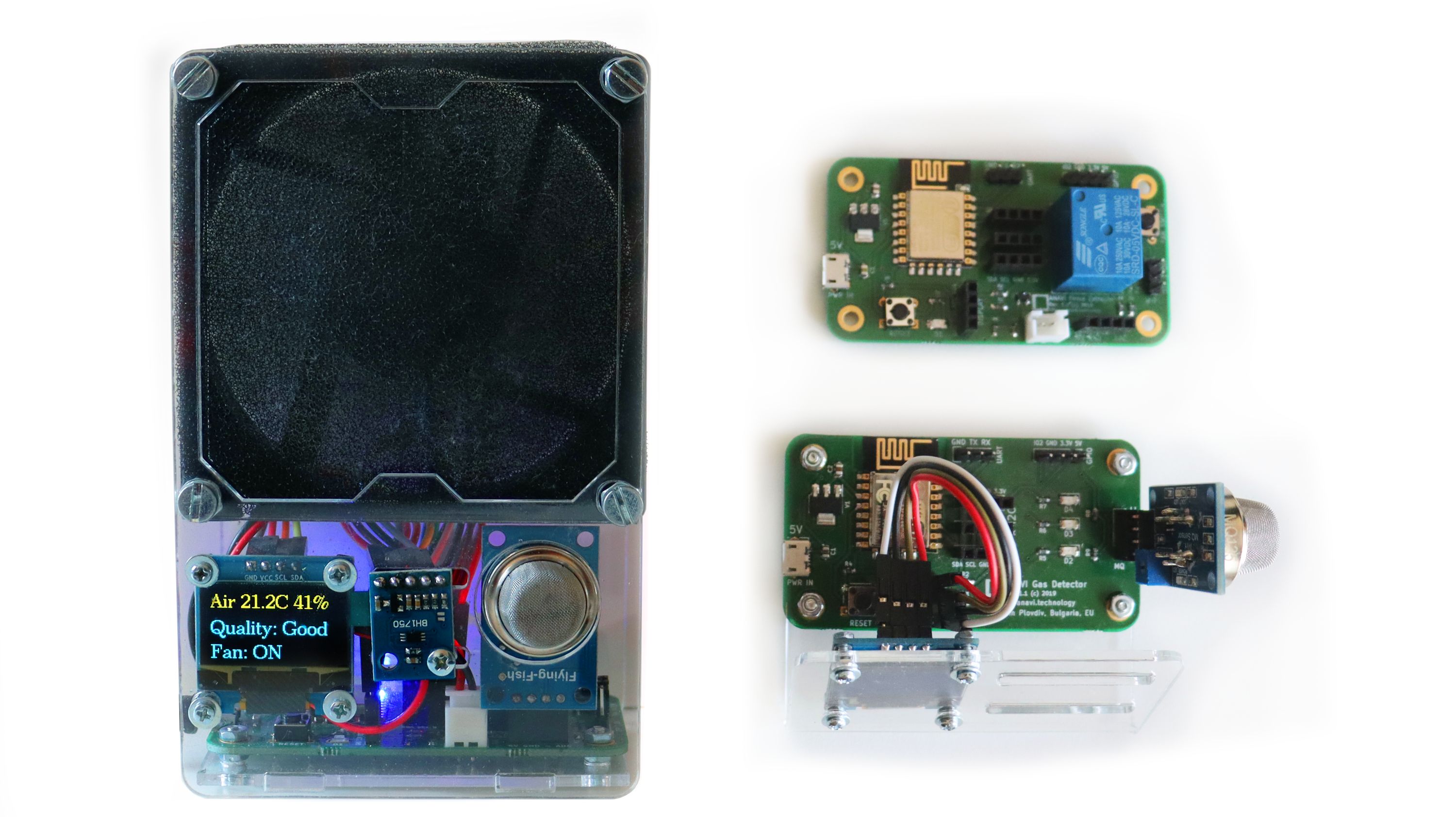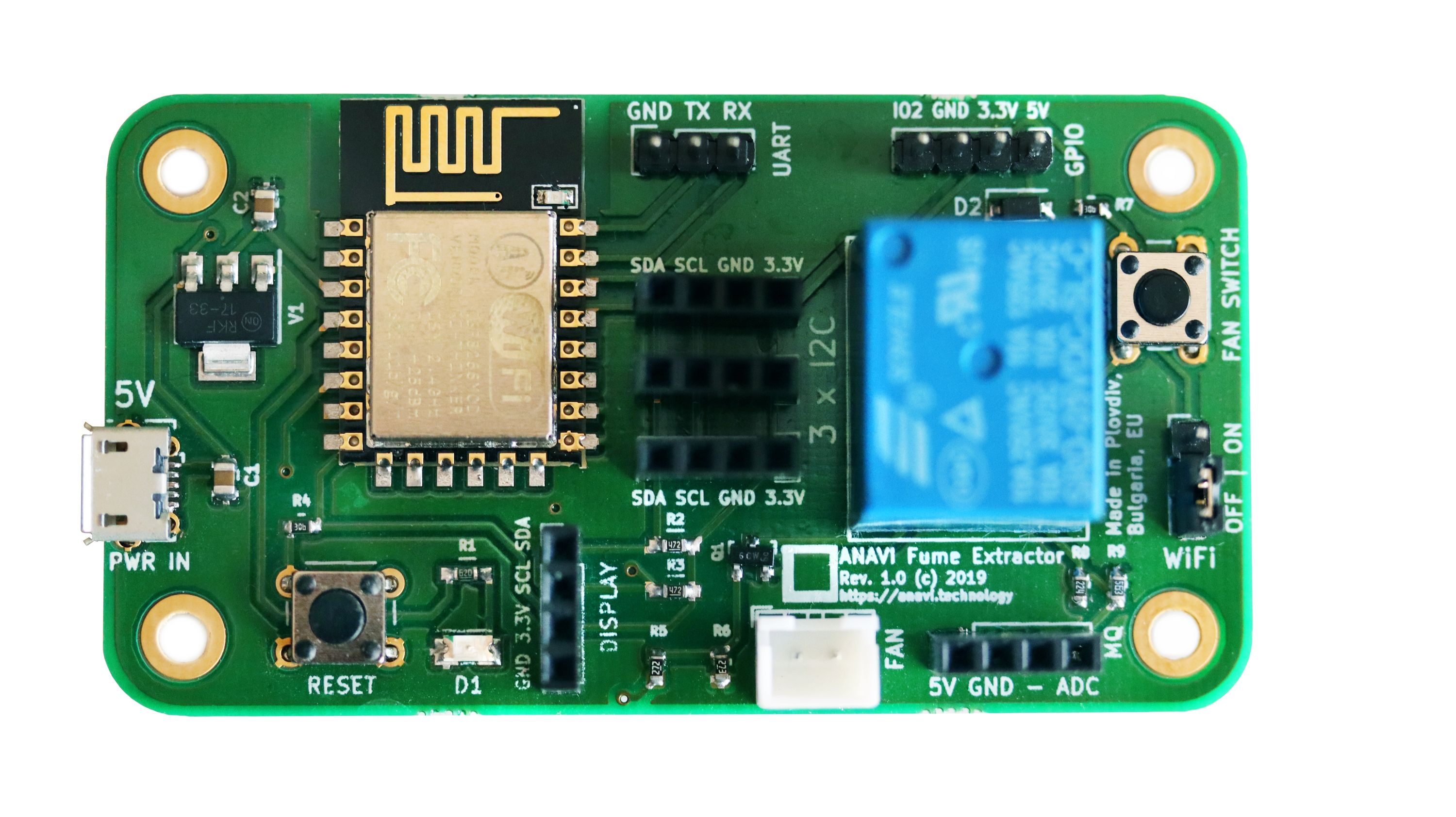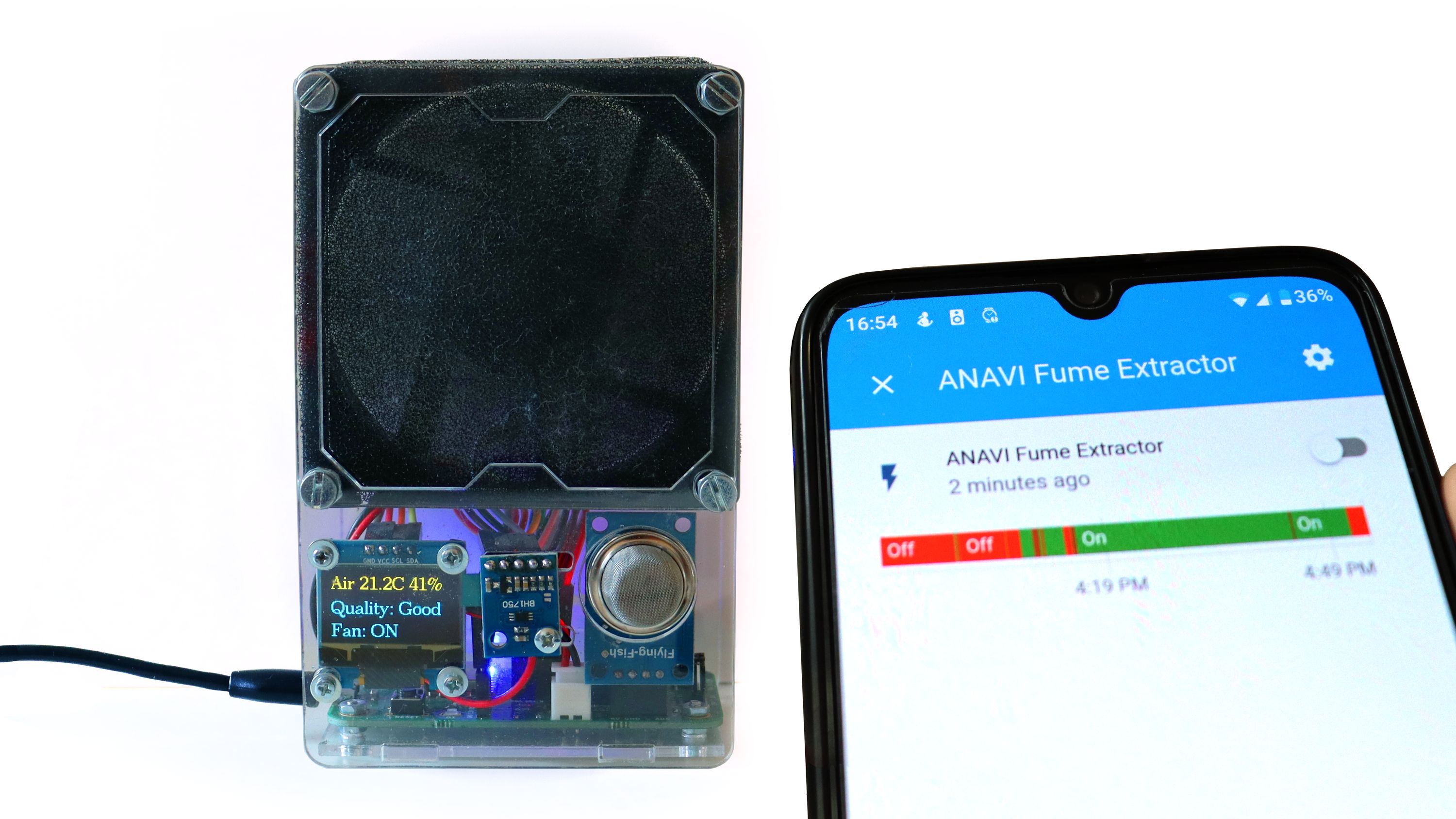In August 2019 I created an ESP8266-powered, open source, Wi-Fi dev board for monitoring indoor air quality and detecting dangerous gases called ANAVI Gas Detector. I placed one ANAVI Gas Detector in my kitchen and soon after that I placed another on my desk for maker activities. At that time while soldering I was using a bulky and noisy smoke absorber. Naturally, an idea came to my mind: let’s upgrade the gas detector to a fume extractor by putting a brushless 5V DC fan and a filter. ANAVI Fume Extractor was born!
If you take a closer look at the development boards of ANAVI Gas Detector and ANAVI Fume Extractor you will notice a lot of similarities. Same dimensions of the PCB (75 mm x 40 mm), same micro USB connector, same button, same UART pins for flashing custom firmware, same slots for sensors and mini OLED display, of course the same ESP8266 Wi-Fi microcontroller. However, ANAVI Fume Extractor has several important differences:
- A relay and a special connector for the 80mm 5V 0.25A brushless DC fan
- A button to switch on and off the fan manually
- A jumper to switch on and off the Wi-Fi
Both ANAVI Gas Detector and ANAVI Fume Extractor work with the popular MQ-135 analog gas sensor module for detecting general air quality in buildings and offices. The advanced and developer kit of ANAVI Fume Extractor includes a MQ-135 module. However, keep in mind that all soldering fumes are dangerous and the fan must be always on during soldering. The air quality sensor doesn’t control the fan directly, although if you want you can implement this as a software feature.
Another similarity between ANAVI Gas Detector and ANAVI Fume Extractor is that both are entirely open source and made with free and open source tools only. The printed circuit boards have been designed with KiCad and the acrylic enclosures with OpenSCAD.
Out of the box, just like ANAVI Gas Detector, the default open source firmware of ANAVI Fume Extractor works with the MQTT protocol and it is compatible with the popular open source IoT platform Home Assistant. This allows you to monitor real-time data from the various sensors and to control the fan remotely. To achieve this the open source firmware, available at GitHub as an Arduino sketch, implements Home Assistant specifications for MQTT Sensor, MQTT Binary Sensor and MQTT Switch. To prevent you from manually setting difficult and annoying configurations, the default open source firmware also supports automatic discovery of ANAVI Fume Extractor in Home Assistant over MQTT.
Thank you for supporting these open source projects. Stay tuned for news and updates to learn more technical details. Hurry and place an order during the crowdfunding period to be among the first owners of ANAVI Fume Extractor!
Thanks,
Leon








